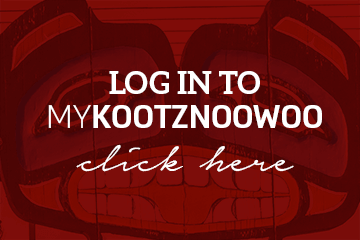This article reprinted courtesy of The U.S. Forest Service.
Tribal and community forest partnership crews are at the forefront of forest stewardship in Southeast Alaska. Each day, they traverse remote areas of the temperate rain forest, restoring salmon habitat, collecting data and using chainsaws to create space for wildlife and emerging young growth.
With so much experience, it’s no wonder these stewardship crew members were called upon to participate as co-learners and experts in a recent training on Prince of Wales Island. Over eight days in April, participants brushed up on field navigation and data collection, earned Wilderness First Aid and chainsaw certifications, and engaged in informal peer-to-peer learning.
The training brought together 40 participants from crews that live and work throughout Southeast Alaska: among them—crews from the Ketchikan Indian Community, Prince of Wales Tribal Conservation District, Keex Kwáan Community Forest Partnership (Kake), Klawock Indigenous Stewards Forest Partnership, Kootznoowoo (Angoon), and Hoonah Native Forest Partnership. It was the first time these teams, from island communities throughout the Tongass National Forest, gathered in one place to train and learn from each other.
Well-orchestrated teamwork from a handful of organizations was required to launch the new training. The Forest Service helped with funding and planning, housing participants in the local bunkhouse in Thorne Bay, making the local district office conference room available, loaning out fleet vehicles, chainsaws and personal protective equipment, and providing instructors for courses such as chainsaw training. The Klawock Indigenous Stewards Forest Partnership helped design the curriculum and led training sessions. The Southeast Alaska Watershed Coalition took the lead on coordinating with other agencies, and managed travel requirements. The Sustainable Southeast Partnership and The Nature Conservancy also collaborated on curriculum development and leading the event.
Julia Nave, the Southeast Alaska program director for The Nature Conservancy, explained that the training was part of her organization’s broader strategy of supporting Indigenous stewardship. “Given that many crews are tribal, or community forest crews employed by a tribe, this training was a great opportunity to support those groups across the region as they continue to steward their homelands as they have for millennia.”
Nave noted that it was not just about the new skills and certifications that were gained, but how the learning was taking place. “Instead of just an expert sharing information in a one directional way, there was a lot of cross-pollination of ideas—an opportunity for everyone to speak up as a leader and expert in the place where they are from and call home.”
Crew members from the Klawock Indigenous Stewards Forest Partnership not only participated in but led some of the training sessions. Coordinator Quinn Aboudara said, “For some of our younger, more junior crew members, it was beneficial for them to be recognized as professionals and experts in their fields—having their voices heard.”
- Among the skills gained during the training:
- 18 people were certified in Wilderness First Aid and practiced skills with field scenarios.
- 15 people were certified in general chainsaw use and felling.
- Two participants were certified as chainsaws instructors
- 40 trainees increased their knowledge in gathering ecological data and conducting field navigation.
Participants left with new skills, a renewed sense of partnership and collaboration and eagerness to start work in their home communities. Many crew members shared that they do this work so their children and grandchildren can fish, hunt and subsist on the same lands their ancestors have lived on for millennia.
This first gathering of its kind was more than just a job training—it was about connection between participants over their love of the land, stewarding that land for future generations and centering Indigenous voices in the process.
The Nature Conservancy provided the bulk of the funding for the event and contracted a photographer to capture images and videos for partners to use in storytelling. Prior tribal stewardship crew project funding from the Forest Service Southeast Alaska Sustainability Strategy also helped lay the foundation for the April field instruction.



